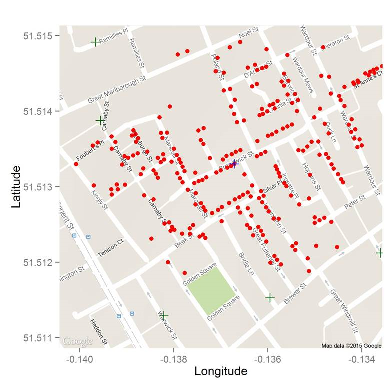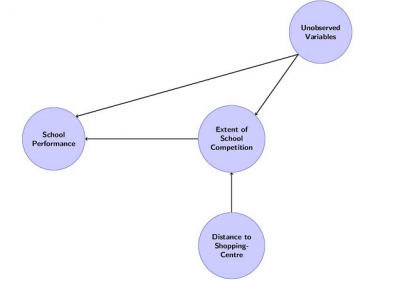Note – this piece was first published on April Fool’s Day 2015!
The establishment of free schools by the current government aimed to meet a demand for new school places in particular areas and to raise the performance of all schools through increased competition. For researchers, trying to show whether the establishment of a free school in an area has had an effect on neighbouring schools poses several challenges. In particular, free schools are not distributed at random across the country being located in areas where there is a shortage of school places. The effect of the establishment of a free school is therefore likely to be endogenous, meaning that there are likely to be factors other than the establishment of a free school which are likely to have influenced the performance of schools adjacent to free schools.
It is unlikely that we will be able to measure all such factors in empirical studies which makes it difficult to isolate the effect that the establishment of a free school has had on neighbouring schools. One approach commonly used in economics for dealing with the problems that arise due to omitted variables is to find an instrumental variable, something which we can reasonably assume to be uncorrelated with any omitted variables and whose only effect on the outcome under study is through the variable whose effect we are interested in. This was famously used in Snow’s study of the 1854 cholera outbreak in Broad Street, London, to show whether cholera was due to ‘bad air’ or was transported by water. Distance to the water pump was being used as an instrumental variable. In the figure below the water pump in Broad Street is indicated by the blue cross while the green crosses are neighbouring pumps. The figure shows that deaths from cholera are clustered around the pump in Broad Street providing strong evidence that the cause of the outbreak was water borne and not ‘bad air’.
Deaths from cholera in the 1854 Broad Street outbreak and location of water pumps

If we want to use this type of strategy to examine the effect of free schools on the performance of neighbouring schools, however, we need to find a plausible instrumental variable. Looking in the research literature, a recent study of charter schools in the US (published in the Journal of Public Economics) used the distance to the nearest shopping centre as an instrumental variable for the effect of charter schools on local state schools. Charter schools are similar to free schools and, it seems, are commonly situated in shopping centres because of the availability of space. The argument for using distance to a shopping centre as an instrumental variable is therefore that the correlation between distance to a shopping-centre and school performance is due to the effects of charter-schools on local schools while distance to a shopping centre is uncorrelated with other factors influencing both educational performance and the location of charter schools (see Figure below).
Suggested relationships between the instrumental variable (distance to shopping-centre), competition from charter-schools and school performance in the US

Of course, free schools in England are not, as far as I know, situated in shopping centres so we will have to find another approach. Following from the recent report from Policy Exchange, ‘A Rising Tide‘ it seems that distance to the nearest pier might be a good choice of instrumental variable for the effects of free schools on the performance of their nearest schools in England. The simple argument here being that the nearer you are to the sea, the easier it is to catch the tide, the well-known pier-effect in English education. We may publish data on the strength of distance to piers as an instrument in the future. But, for now, in order to quickly investigate whether this idea holds any water, the figure below shows the relationship between the percentage of pupils getting 5 GCSEs at grade A* to C (including English and maths) and the distance to a pier for the state schools which were closest to free schools for all years from 2011 to 2014. The bold line shows that for these schools there is a consistent negative relationship between school performance and distance to a pier. Whether this pier effect can be changed by the establishment of further free schools remains to be seen but is something that I, at least, will be watching closely.
Relationship between suggested instrumental variable (distance to a pier) and performance of state schools closest to established free schools in England






Leave A Comment